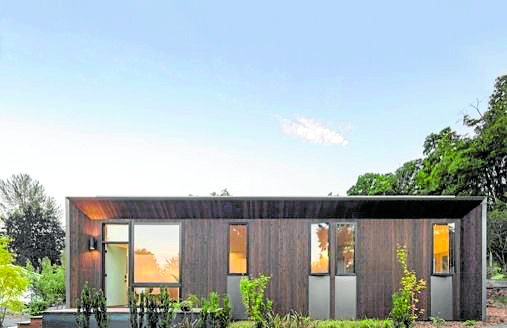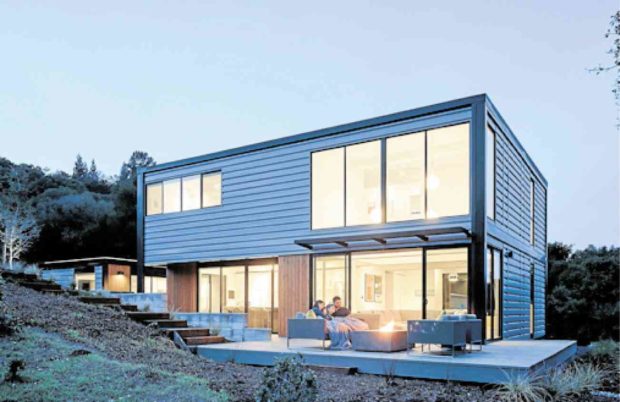
Then now is the time to start designing, so that by early next year, you can start building. And you’ll have that new home the year after.
With the quarantines and our inability to experience outdoor spaces every day, more and more people have been contemplating on building secondary homes outside the city, especially those who currently live in small homes or in condominium buildings.
In the past weeks, I’d been in discussions with friends over which properties to choose, what kind of lifestyle to cater to, which design theme to have, and what sort of budgets and schedules come with building that secondary home.
Current favorite spots are either by the beach or in farm plots that not only allow for more leisure space, but also enable a multitude of activities like play, exercise, planting and farming, and a whole array of other endeavors or new-found outdoor and indoor hobbies. Others just want larger spaces at the fringes of the metro, in areas that provide a more rural experience.
While picking a property is the most exciting part of the journey, there are many things to consider when building a secondary home. Being outside the city certainly has its perks, but it also has its challenges.
Here are some practical considerations for selecting your property, designing, building and living well at the fringes and beyond.
Check the basic requirements: provisions for electricity, water, power, communications. Do not take for granted that everything is readily available and that you’ll be safe from power outages. You wouldn’t want to choose a nice plot and be happily expecting to work from your secondary home when you are, in fact, unable to tap into your 5G or a high-speed internet connection.

Are there medical facilities and supplies available nearby? You might want an escape from the anxieties attached to the pandemic, but you wouldn’t want to be caught unprepared either. A nearby medical clinic or a small hospital is a must.
Validate the security of the place. There are always areas more prone to break-ins and burglaries because they are easy targets. Is it near a populated area? Is it too isolated at night? Can you accommodate a full-time “bantay” or caretaker, and can you provide enough living space for them?
Make sure your perimeter security lights are controllable from your bedrooms. Then add a layer of flood lamps that can be switched on in case of suspected prowlers. As any security consultant will advise, you do not want an encounter. You just want to ward off any attempts.
Look into its history for underwater springs, creeks or riverways that may have dried-up but are real threats during the rainy season. Consider these in your planning exercise as springs or other water bodies will provide many benefits. They also help make energies flow. Moving water is known to generate negative ions and activate the “chi” or life force. l If the property is on a slope, verify the topography. People have bought lots hoping to build a two-story structure but end up with a five-story one due to drastic slopes that they hadn’t anticipated. Looking at the upside, a sloped property provides great opportunities for physical movement.

Check the orientation in relation to the depth and width of the property. Orienting a home properly in relation to solar and wind paths can regulate the level of comfort inside your home. It can replenish your indoor air, douse you with Vitamin D3 and also provide you with positive biophilic sensory stimuli. Everyone’s dream is to have a sunrise view over the mountains or a sunset view by the sea, but little account is given to how much solar heat—and discomfort—is generated by these direct exposures.
When you design your landscape, consider existing and endemic species, and the biodiversity present in your area. You should be supporting and enhancing the existing flora and fauna in your choice of outdoor elements. And save the mature trees. Build around them and prioritize saving other smaller trees in your plot.
Consider prefabricated systems especially if you are building small. They are quicker to erect, especially that there are costly mobilization requirements during the construction due to the pandemic. But if you have the budget and the space, nothing beats a customized home of your dreams.
Because you will want the maximum movement of air, have your door and window openings standing tall to force warm air to flow out and forcibly replenished by cooler air. Unless you want your airconditioning running extensively, do away with large, fixed glass panels as they absorb an incredible amount of radiant solar heat. Use brise-soleils, screens, and perforated walls to encourage light filtration and good air flow.
For airconditioning installations, make sure that your split-type units have their indoor and outdoor components well located for ease of maintenance. Shorter runs for refrigerant pipes will give you less problems later. For a secondary home, you may want to consider window-type units that you can easily replace or pull out for repair, instead of having to call someone into your home during these uncertain times.
Secure your doors and windows with the proper hardware and locks. If you have glass doors in the perimeter, make sure to use laminated glass or tempered glass, as it takes a lot more effort to break them. Security film applied to glass also deters breakage. Safety and security top the list of considerations for a good night’s rest.
Install a centralized voltage regulator. Most appliances still don’t have built-in ones, and when power is provided and distributed by cooperatives, fluctuations are common, and can easily damage your appliances.
Have more freezer space than you think you need. When you are in a nice farm plot or beachfront, rest assured that guests will always be coming. (Well, eventually, once we’ve reached herd immunity). Be prepared for large groups. And do not forget your outdoor kitchen or barbecue area, a space for your kitchen garden and area for composting. This is why you have a secondary home.
A rural setting is more organic than the city, hence, try to use natural or less chemically altered materials. Keep sustainable materials in mind. For interior fabrics, use natural linens and cottons in light color shades to keep the sunlight bouncing about your rooms, keeping mold and mildew away.
Plan your spaces so they can be adaptive, so that any future change in lifestyle or function will not necessitate any major renovation, thus extending the life of your spaces and the materials that you have utilized. Open plans work best but create nooks and corners for some semblance of intimate personal spaces.
If you expect a lot of sunlight, consider the UV exposure of your materials, especially colored ones (like curtain fabric and other upholstery, that can fade in the sunlight).
I can really run this list a lot longer. But for those in the process, good luck and have fun, because this can certainly be one of the most significant milestones of your life. It can also be one of the most challenging! But it won’t have to be a drain to your energies for as long as you have prepared.
Start the countdown now.
Article and Photo originally posted by Inquirer last June 7, 2021 12:16am and written by Ar. Isabel Berenguer-Asuncion.









More Stories
Weekend wanderer: This walk in Manila is a trip to art and to our past
Enjoy no-frills camping in the great outdoors in Tanay
Landco Pacific raises the bar for premium resort and leisure living